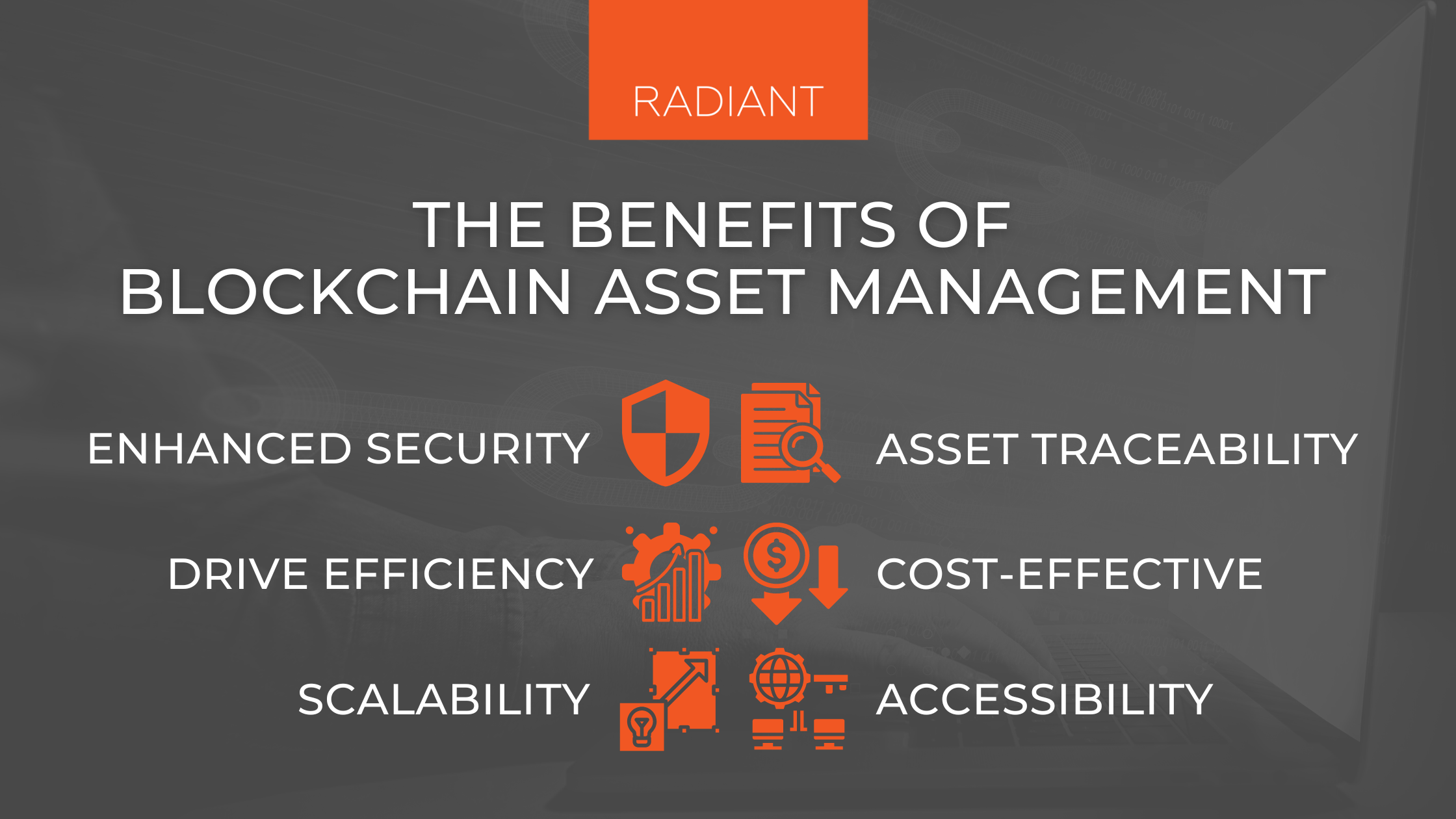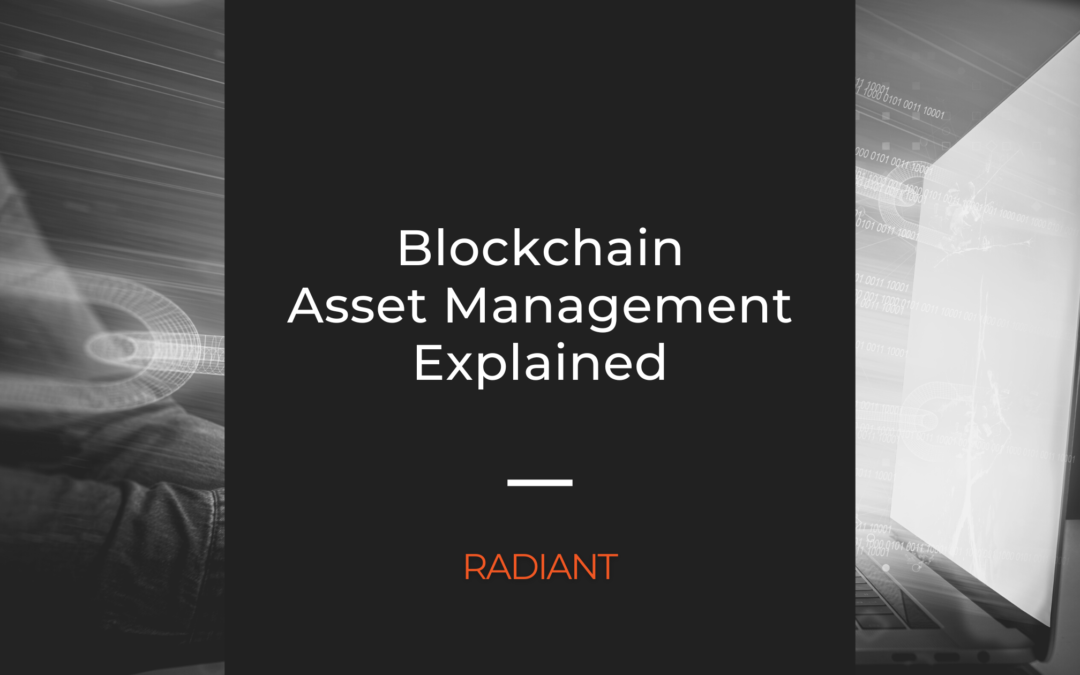Are you a business leader seeking greater insight and transparency into your physical asset management? You’re likely familiar with the Internet of Things (IoT) solutions that monitor asset usage in real-time, but what about utilizing blockchain technology as an additional layer for even more complete asset management capabilities?
Blockchain-based asset management systems can provide comprehensive visibility and control over the entire lifecycle of your organization’s physical assets – from purchase order to end of service.
In this blog post, we will cover how blockchain technologies work within an IoT ecosystem, the services it provides, and, most importantly, why businesses should consider investing in this unique approach to asset tracking.
What Is Blockchain Asset Management?
Blockchain is one of the most talked-about technologies in the world right now, with many businesses and organizations jumping on board to explore the potential of blockchain applications.
Blockchain asset management is a growing sector of blockchain technology focused on leveraging blockchain to improve asset management processes and supply chain tracking. The goal is to increase efficiency, reduce costs, enhance security, and create better transparency within asset tracking.
By taking assets’ instructions directly from blockchain networks, assets can be tracked more closely in real-time, which improves accuracy and decreases risk. This enables blockchain asset management systems not just to track individual assets throughout their life cycle, but also to provide data-driven insights on their actions across entire networks from one single point.
Why Is Blockchain Asset Management Important For Businesses Today?
Recent advancements in blockchain technology have made blockchain asset management a valuable option for businesses to track physical assets.
By offering secure and easy access to asset data, blockchain asset management systems provide immense benefits to businesses, especially when it comes to tracking assets in real-time. Its secure architecture also means that few people can edit or modify the asset registry without malicious intent.
Additionally, blockchain asset management systems involve multiple stakeholders and require permission before changes are authorized, providing an additional layer of security.
Ultimately, blockchain has become a strategic tool for businesses looking to take full advantage of their physical assets and enhance the safety, value, and trustworthiness of those assets.
Blockchain Asset Management Use Cases
Blockchain asset management presents an engaging alternative to traditional methods of tracking tangible and digital assets.
By leveraging blockchain’s immutable and traceable blockchain ledgers, businesses have access to a secure and reliable platform to track the exact whereabouts of assets, including parts in the manufacturing process, stock production chains, and logistics tracking.
For example, blockchain asset management can ensure that certain products are being produced in accordance with environmental best practices – or that they meet certain quality standards.
Additionally, blockchain also enables companies to keep track of every step of their supply chain as well as expedite payments between suppliers, vendors, and consumers.
Other use cases for blockchain asset management include ensuring digital identity validity, facilitating efficient asset transfers, and tracking rental/leasing documents over a distributed blockchain network.
As blockchain asset management expands in reach and complexity, it will further improve management processes for organizations across all sectors.
How Does Blockchain Asset Management Work?
Blockchain asset management is a powerful tool that can be used to track and manage both physical and digital assets securely.
At its core, blockchain technology uses an immutable distributed ledger system, meaning each entry in the blockchain cannot be changed or altered once entered. This is why blockchain, when used for asset management purposes, ensures complete auditing and accuracy of all transactions.
For instance, blockchain-based asset tracking systems create smart contracts to validate asset ownership, check permissions automatically, and more.
As such, blockchain can offer a degree of security not otherwise achievable with traditional asset tracking methods—ensuring no malicious actors can tamper with any data or access confidential information.
The Benefits Of Blockchain Asset Management
Blockchain-based asset management provides several benefits for businesses, including:

- Security: One of the primary benefits of blockchain-enabled asset management is that it is more secure than traditional methods. With blockchain, each asset is given a unique identifier that cannot be changed or tampered with. This ensures that company assets cannot be duplicated or counterfeit. Additionally, blockchain asset management systems can be programmed to require multiple approvals for any changes to be made, further increasing security.
- Traceability: Another benefit of blockchain asset management is traceability. With blockchain, every time an asset is transferred, a record of the transfer is stored on the blockchain. This allows businesses to track their assets at all times and ensure that they are being used as intended. Additionally, traceability can help businesses to identify and avoid fraud and corruption.
- Operational Efficiency: Blockchain asset management systems can also help to increase efficiency by automating many tasks that are traditionally done manually. For example, blockchain can be used to automate the process of issuing invoices or tracking inventory levels. This can free up employees’ time so that they can focus on more productive tasks.
- Cost-effective: Another benefit of blockchain asset management is that it is generally more cost effective than traditional methods. This is because blockchain systems can eliminate the need for middlemen such as brokers or notaries. Additionally, blockchain systems can automate many tasks that would traditionally be done manually, further reducing costs and eliminating mistakes due to human error.
- Scalability: Blockchain asset management systems are also highly scalable. This means that they can easily be expanded to accommodate more users or assets without compromising security or asset performance. This makes them ideal for businesses that are growing rapidly or have large numbers of assets to manage.
- Accessibility: Another benefit of blockchain asset management systems is that they are generally more accessible than traditional systems. This is because they do not require specialized hardware or software and can be accessed from any device with an internet connection.
All in all, blockchain technology enables sophisticated asset management capabilities without sacrificing security or data accuracy.
How IoT Asset Tracking Makes Blockchain Asset Management Even More Effective
With blockchain asset management gaining traction as a dependable way to track and trace assets, it’s important to take a look at other emerging technologies that can drive improved blockchain performance and help business owners to capitalize on blockchain benefits.
Internet of Things (IoT) asset tracking has the potential to revolutionize blockchain asset management by providing real-time data from connected assets along with clear chain-of-custody visibility.
Instead of manually verifying records in a blockchain, an IoT device, such as RFID tags, can provide visible proof of regulatory compliance, and proven records are always available in real-time. This enables business owners to leverage blockchain combined with IoT network capabilities before any disruption or dispute occurs.
By combining blockchain asset tracking with automated smart contracts, businesses could save money and tremendous amounts of time through verified digital identities, automated payments, and real-time notifications.
With the rise of IoT asset tracking solutions, blockchain asset management has become even more reliable and secure than ever before.
The Bottom Line
Blockchain asset management is a new and exciting way to manage physical assets using blockchain technology. By tracking assets on a decentralized ledger, businesses can enjoy greater transparency and security in their asset management processes.
IoT asset tracking makes blockchain asset management even more effective by allowing businesses to automatically track the location and condition of their assets in real-time.
If you’re interested in exploring how blockchain asset management can benefit your business, be sure to check out our IoT solution and request your demo below. Thanks for reading.
Last Updated on January 27, 2023 by Radiant

